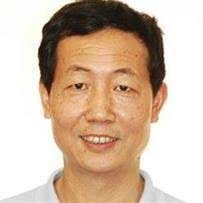 |
Professor with School of Information Science and EngineeringDirector of Hubei Province Key Laboratory of Intelligent Information Processing and Real-Time Industrial SystemsDeputy Director of Institute of Robotics & Intelligent Systems (IRIS) Wuhan University of Science and TechnologyWuhan China |
Dr Shiqian Wu received the B.Eng. and M.Eng. degrees from the Huazhong University of Science and Technology (HUST), Wuhan, China, in 1985 and 1988, respectively, and the Ph.D. degree from Nanyang Technological University, Singapore in 2001.
He is currently a full Professor with School of Information Science and Engineering; Director, Hubei Province Key Laboratory of Intelligent Information Processing and Real-Time Industrial Systems, Deputy Director, Institute of Robotics & Intelligent Systems (IRIS), Wuhan University of Science and Technology, Wuhan. From 2000 to 2014, he was a Research Fellow / Research Scientist with the Agency for Science, Technology and Research (A-STAR), Singapore. He has co-authored two books and more than 260 scientific publications (book chapters, journal/conference papers). He was listed as Most Cited Chinese Researchers in 2014~2021 by Elsevier. His research interests include computer vision, image processing, pattern recognition, intelligent robotics and artificial intelligence.
Low-Rank Decomposition for Signal Processing Applications
The rapid development of signal acquisition prompts the quantity and dimension of the sampled data. Low-rank decomposition, due to its excellent performance for the low-rank structure of data, has been widely used in the field of signal processing to analyze the low-rank structure information of high-dimensional signals. In this talk, the theories and algorithms of low-rank decomposition are introduced, giving emphasis to Robust Principal Component Analysis (RPCA). Specifically, we pay more attention to addressing three issues in low-rank decomposition: 1) determination of low-rank boundary; 2) information loss in solving optimization; 3) adaptivity in low-rank decomposition. Finally, we demonstrate several applications in image processing, computer vision and sound direction of arrival (DOA) estimation.